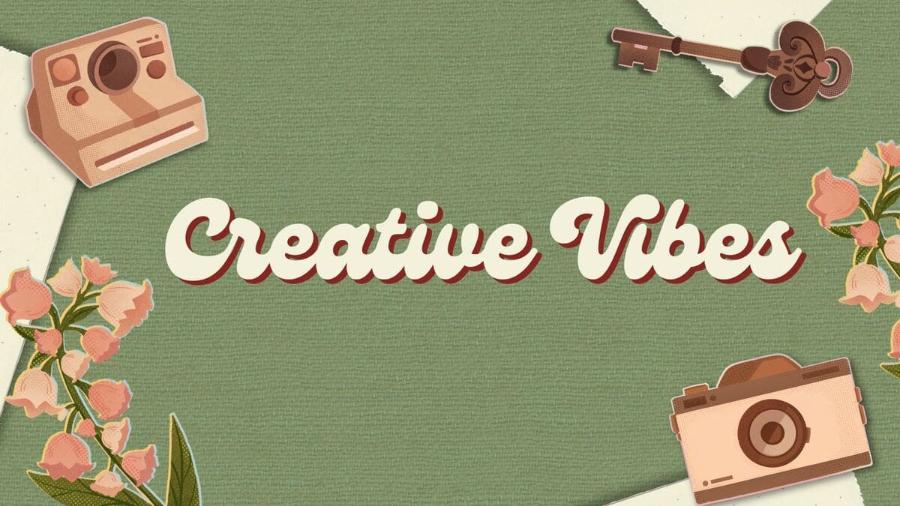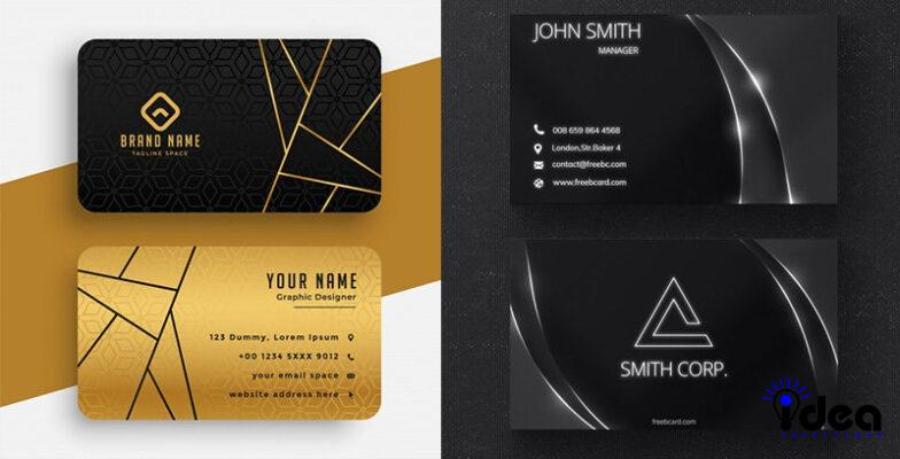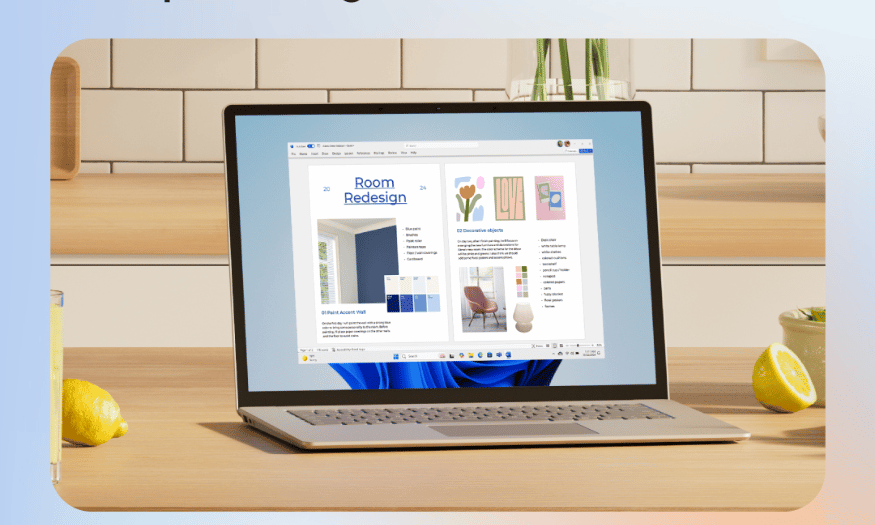Best Selling Products
What is Creative Vibe? The Secret to Unique and Creative Design
Nội dung
- 1. Decoding the Concept of "Creative Vibe": More Than Aesthetics
- 2. Why Is Creative Vibe Important In Design?Having a unique Creative Vibe has huge benefits for both the designer and the design product:
- 3. The Journey of Discovering and Shaping a Unique Creative Vibe
- 3.1. Understanding Yourself and the World View
- 3.2. Expand Your Source of Inspiration
- 3.3. Developing Personal Design Style
- 3.4. Expressing Creative Vibe in Design
- 4. Maintain and Develop Creative Vibe Over Time
- 5. Applying Creative Vibe in Specific Design Fields
- 5.1. Graphic Design
- 5.2. Web Design
- 5.3. Fashion Design
- 5.4. Interior Design
- 5.5. Product Design
- 6. Common Barriers to Finding Unique Creative Vibe
- 7. Conclusion
What is Creative Vibe? Learn the secrets of unique and creative design, making a distinctive mark on every project. Discover now to elevate your design style

In the competitive world of design, creating products that are not only beautiful but also personal and emotionally evocative is key to attracting attention and establishing a unique identity. The term "Creative Vibe" is becoming increasingly popular, referring to the creative atmosphere, unique inspiration and innovative spirit that a design conveys. So, what exactly is Creative Vibe? And how can a designer generate and express a unique creative "vibe" in his or her work? In this article, sadesign will explore the concept of Creative Vibe and provide practical strategies for you to create designs that are personal and strongly inspiring.
1. Decoding the Concept of "Creative Vibe": More Than Aesthetics
“Creative Vibe” is more than just eye-catching looks or a harmonious combination of colors and shapes. It has a deeper meaning, including:
.jpg)
Creative Atmosphere: Creative Vibe creates a feeling, a particular atmosphere around the design. It can be fresh, dynamic, calm, mysterious, or any emotional state the designer wants to convey.
Unique Inspiration Source: Each design has a unique Creative Vibe that is often inspired by the unique ideas, experiences, or perspectives of its creator. This inspiration can come from nature, culture, art, science, or even the simple things in life.
Spirit of Innovation: Creative Vibe is often associated with the spirit of daring to experiment, breaking conventional rules and finding new, unprecedented design solutions.
Personal Touch: A design with a strong Creative Vibe often has a strong personal touch from the designer, reflecting their own style, personality, and worldview.
Emotional Connection: Creative Vibe has the ability to touch the emotions of the viewer, evoke thoughts, feelings and create a deep connection.
In short, Creative Vibe is a combination of unique ideas, personal style, innovative spirit and the ability to convey emotions through design language. It is the "soul" of a work, making it different and memorable.
2. Why Is Creative Vibe Important In Design?Having a unique Creative Vibe has huge benefits for both the designer and the design product:
.jpg)
Make a difference and stand out: In a market saturated with countless similar designs, a distinctive Creative Vibe helps your work stand out and attract attention.
Building a strong brand identity: For brand design, Creative Vibe plays an important role in creating a unique, recognizable image that sticks in the minds of customers.
Attract the right target audience: The right Creative Vibe can resonate with the target audience's tastes and values, creating a connection and attracting them.
More effective message delivery: Creative Vibe has the ability to deliver messages in a subtle and emotional way, helping viewers understand and remember them longer.
Expressing the designer's personality and style: Creative Vibe is a way for designers to express themselves, assert their own style and make their mark in the industry.
Inspire Others: Designs that have a strong Creative Vibe can serve as inspiration to other designers and help move the industry forward.
3. The Journey of Discovering and Shaping a Unique Creative Vibe
To create a unique Creative Vibe, designers need to go through a journey of discovery and shaping their own creative identity. Here are the important steps in this journey:
3.1. Understanding Yourself and the World View
Explore your interests and passions: What really attracts and excites you? What areas of art, culture, science, or other aspects of life inspire you?
Identify your values and beliefs: What values and beliefs shape you? What messages do you want to convey through your designs?
Analyze your personal experiences and insights: What experiences have left a lasting impression on your life? How can these experiences serve as unique inspiration for your design?
Explore your favorite art styles: What design styles are you drawn to? What about those styles resonates with your aesthetic?
3.2. Expand Your Source of Inspiration
Observe the world around you: Pay attention to the small details of everyday life, from the beauty of nature, the hustle and bustle of the city, to the stories of people.
Explore different fields: Don't limit yourself to design. Explore art, music, literature, film, science, history, culture... Any field can bring new ideas and perspectives.
Find inspiration online and offline: Visit museums, galleries, read books, watch movies, listen to music, surf the web, explore design platforms... Actively collect and store images, colors, patterns, ideas that attract you.
Experiment and combine different elements: Don't be afraid to experiment with unexpected combinations of styles, techniques, materials... Unique blends can create a whole new Creative Vibe.
3.3. Developing Personal Design Style
Keep practicing and experimenting: The more you practice, the more you'll understand your design language and find unique ways of expressing it.
Analyze and evaluate your work: Take an objective look at the designs you've created. What do you like? What could be improved? What style is emerging in your work?
Look for "signature elements": What elements (colors, shapes, patterns, techniques...) appear frequently in your designs and become your signature?
Get feedback and learn: Share your work with colleagues, friends, or the design community and listen to their feedback. Don't be afraid to experiment with new ideas.
3.4. Expressing Creative Vibe in Design
(2).jpg)
Choose a unique color palette: Color is one of the most important elements in creating a distinctive Creative Vibe. Experiment with unconventional color palettes and unexpected yet harmonious combinations.
Use shapes and lines with personality: The way you use shapes and lines can convey different emotions and ideas. Find your own unique forms of expression.
Explore new materials and techniques: Don’t limit yourself to traditional materials and techniques. Explore and experiment with new materials, special printing and processing techniques to create unexpected effects.
Storytelling through design: Every design should have a story, an idea or a message. Creative Vibe is how you tell that story in a unique and engaging way.
Create contrast and emphasis: Use contrast in color, shape, size, material... to create attention-grabbing accents and bring the design to life.
Pay attention to space and composition: The way you arrange elements in a design space can greatly affect the mood and message it conveys. Create a composition that is harmonious and unique.
4. Maintain and Develop Creative Vibe Over Time
Creative Vibe is not a static thing, it needs to be nurtured and developed over time.
Keep learning and updating: The design world is always changing. Stay updated with new trends, new technologies and innovative ideas from all over the world.
Maintain curiosity and a spirit of exploration: Never stop asking questions, trying new things and exploring different areas.
Seek collaboration and exchange: Working with other creative thinkers can provide new perspectives and inspiration.
Take time for yourself and recharge: Sometimes, to get inspired, you need to step away from work and spend time on relaxing and recreational activities.
Trust your creative instincts: Don't be afraid to go against the grain or try "crazy" ideas. Sometimes the most unique ideas come from the most unexpected places.
5. Applying Creative Vibe in Specific Design Fields
Creative Vibe is not just an abstract concept but is also clearly expressed in different design fields:
5.1. Graphic Design
Color: Unique color palette, unexpected color combinations, special color transition effects can create different Creative Vibes, from dynamic, youthful to classic, mysterious.
Typography: Choosing and combining unique typefaces and creative letter arrangements can convey strong personality to a design.
Images and illustrations: Using images, illustrations with your own style, unique drawing techniques can create a distinctive Creative Vibe.
Layout: Unconventional layouts that don't follow the usual rules can make a difference and attract attention.
Visual Effects: Use effects like glitch art, abstract, unique geometry to create impressive Creative Vibes.
5.2. Web Design
User Interface (UI): Unique interface design, different from regular websites, using creative interactive elements.
User Experience (UX): Create smooth, intuitive, yet personal browsing experiences.
Images and videos: Use high quality images and videos with a distinct aesthetic style.
Animation and Interactivity: Subtle motion effects, unique interactive elements can create a vibrant and engaging Creative Vibe.
Layout and Navigation: Creative website layout design, unique navigation system while still ensuring usability.
5.3. Fashion Design
Materials and colors: Use unique materials, bold colors, and distinct patterns to create outfits that are uniquely yours.
Style and cut: Design new styles of clothing, unique cuts, breaking traditional patterns.
Accessories: Use unique accessories, design them yourself or mix and match them creatively to complete the Creative Vibe of your outfit.
Story and Idea: Every fashion collection usually has its own story or idea. Creative Vibe is how the designer conveys that story through the clothes.
Presentation and styling: The way the collection is presented, the choice of models and the makeup style also contribute to the overall Creative Vibe.
5.4. Interior Design
Space layout: Arrange interior space in a unique way, creating different flows and experiences.
Materials and colors: Use unusual materials, combine bold colors or create unique color palettes.
Furniture and decor: Choose or design your own furniture and decor that reflects your personal style.
Lighting: Use light creatively to create special visual effects and transform spaces.
Story and Emotion: Interior design is not just about aesthetics but also about creating a living or working space that carries a certain Creative Vibe, evoking specific emotions.
5.5. Product Design
.jpg)
Form and function: Create products with unique shapes, different from existing products on the market, while improving or bringing new functions.
Materials and manufacturing processes: Using innovative materials and applying advanced manufacturing processes to create unique products in both form and quality.
Colors and Finishes: Choose unique colors and product surface finishes to create a distinct Creative Vibe.
User Experience: Product design should not only be beautiful but also provide a different and enjoyable user experience.
Story and Value: A product can carry a story about its origin, manufacturing process, or the value it brings to the user, contributing to the Creative Vibe.
6. Common Barriers to Finding Unique Creative Vibe
On the journey to find and express their unique Creative Vibe, designers often face a number of barriers:
The Influence of Trends: Paying too much attention to current trends can make a design generic and lose its personal touch.
Fear of failure and criticism: Worrying about not having your ideas accepted can stifle creativity and make designers reluctant to try new things.
Lack of confidence in one's own abilities: Doubting one's own creative abilities can lead to copying or following a beaten path.
Time and budget pressures: Time and budget constraints can leave designers little room to explore and experiment with unique ideas.
Lack of inspiration: Sometimes, designers can feel exhausted of ideas and have difficulty finding new inspiration.
Pressure to adhere to rules and standards: In some projects, having to strictly adhere to rules and standards can limit creative freedom.
Comparing yourself to others: Comparing your work to other successful designers can cause feelings of inferiority and loss of originality.
7. Conclusion
Creative Vibe is the "soul" of design, the key element that creates difference and uniqueness. To design a unique Creative Vibe, the designer needs to go through a journey of self-discovery, expand inspiration, develop personal style and constantly experiment. By nurturing curiosity, trusting creative instincts and constantly learning, you can absolutely create designs that are not only beautiful but also have a strong personal mark and inspire viewers. Remember, Creative Vibe is a journey, not a destination. Enjoy the process of discovery and express your own unique creative identity.












































